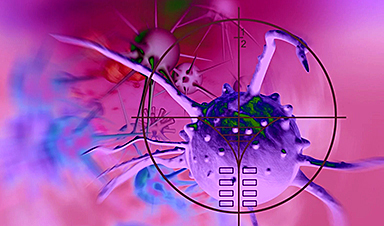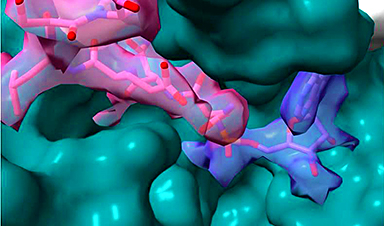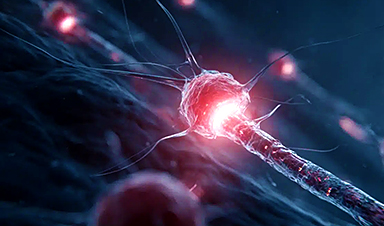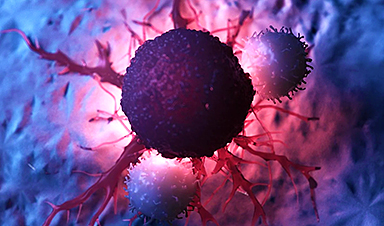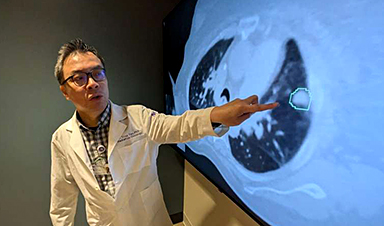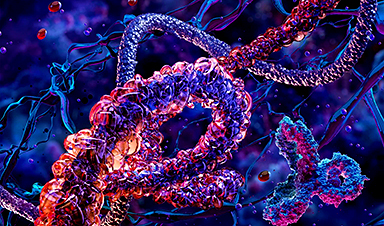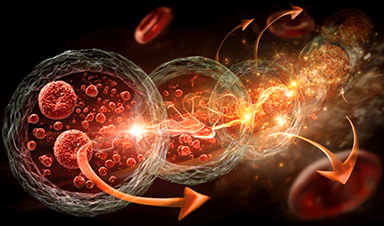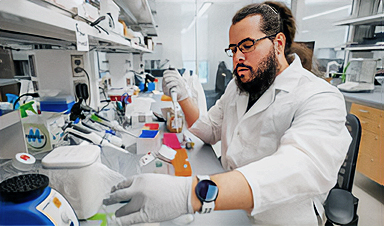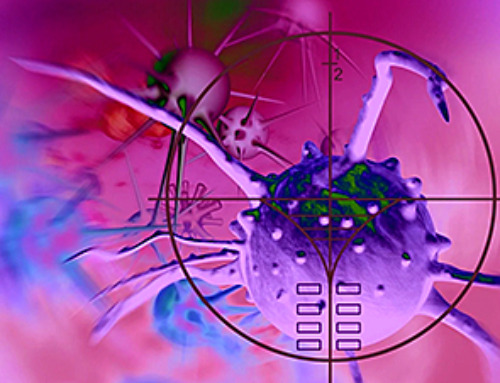A new study, which is forthcoming in Materials Today: Proceedings, has focused on highlighting nanotechnology-based drug delivery systems and targeted delivery approaches for anticancer medication. The authors highlighted the importance of developing plant-based nanoparticles that can be explored to develop novel anticancer chemotherapeutics.
Cancer Treatment and Nanotechnology
To date, one of the biggest causes of death around the world is cancer. Some of the common drugs used in cancer therapy are alkylating agents, cytotoxic antibiotics, antimetabolites, and steroidal hormones. Many anticancer medications are antiproliferative and, thereby, damage DNA and kill cells. Additionally, several side effects, including decreased wound healing, bone marrow depression, growth retardation in young individuals, and alopecia, have been associated with anticancer treatments. It is, therefore, crucial to develop effective anticancer medicines with minimal side effects.
Researchers have linked some of the factors associated with most clinically utilized anticancer medicines to adverse side-effects. These factors include low water solubility, unsuitability for oral administration, short biological half-life, and poor specificity. Nanotechnology has immensely benefitted cancer diagnosis and treatment. Scientists have indicated that the enhanced permeability and retention (EPR) phenomenon has helped to passively target tumor cells. In this system, nanocarriers laden with lethal drugs can target the tumor tissues in a well-designed nanoparticulate system.
Researchers have used nanotechnology platforms for chemotherapy, where well-established conventional anticancer medications, packed into a nano-sized carrier, are delivered to the targeted sites. One of the main advantages of this system is that nanocarriers, owing to their small size, can penetrate through smaller capillaries and are taken up by cells. These cells permit drug accumulation at the target sites. Additionally, biodegradable materials for nanoparticles enable sustained drug release in the specific site over days or even weeks. Scientists have also indicated one of the disadvantages of this method: the high cost. Furthermore, owing to the small size of the nanomaterials, it can cause inhalation problems and other health hazards.
Targeted Drug Delivery and Plant-Based Nanoparticles
Researchers have developed metallic nanoparticles, particularly silver nanoparticles, for cancer treatment. Silver nanoparticles possess unique optoelectronic and physicochemical features and can be synthesized easily. Additionally, several studies have revealed that silver nanoparticles contain antimicrobial and anti-neoplastic properties.
Silver nanoparticles are synthesized via different physical and chemical methods; however, such methods are expensive and consume a significant amount of energy. Synthesis of silver nanoparticles via chemical reduction involves utilizing harmful chemicals and sometimes poses toxicity threats. Interestingly, scientists discovered that plant extracts are more efficient compared to microbial extracts in the green synthesis of metallic nanoparticles. One of the advantages of using plant extracts is that the risk of microbial contamination or infection throughout the synthesis process is much reduced.
Synthesis of Different Nanoparticles and Cancer Treatments
Silver salts are the main source of silver ions. During the bioreduction process, plant extracts act as reducing agents to transform the ions into atoms, followed by nucleation in tiny clusters that expand into particles. The type of reducing agents determines the shape and size of nanoparticles. To avoid aggregation and obtain smaller nanoparticles, capping agents are used.
Carbon nanotubes are small, cylindrical-shaped carbon-based nanoparticles that can absorb near-infrared light wavelengths while passing through cells without harming them. When carbon nanotubes are exposed to a beam of near-IR light, the nanotube’ electrons are excited and the excess energy is released in the form of heat, which can thermally kill cancer cells in vivo.
As cancer cells have numerous folate receptors on their surfaces, nanotubes coated with folate molecules can easily target diseased cells. Carbon nanotubes can deliver therapeutic molecules or drugs to cancerous cells. Interestingly, researchers functionalized these nanoparticles with specific functional groups to manipulate their physical and biological properties.
Dendrimers are sphere-shaped macromolecules that can encapsulate hydrophobic medicinal ingredients. These nanoparticles are divided into three sections: the central core, branching units, and terminal functional groups. Primarily, the core determines the environment of nanocavities and their solubilizing characteristics. Dendrimers can be synthesized in various sizes and shapes, with multiple polar and non-polar layers. Their high-water solubility, monodispersity, and capsulation ability are widely used for drug delivery.
Conclusion
Researchers have highlighted that various plant extracts have been used in the green synthesis of metallic nanoparticles, particularly gold and silver nanoparticles. However, not many methods are available that are related to the plant-based synthesis of carbon nanotubes and dendrimers. As these nanoparticles are widely used in cancer therapy, developing effective formulation targeting methodologies for plant-based synthesis is essential.
News
Most Plastic in the Ocean Is Invisible—And Deadly
Nanoplastics—particles smaller than a human hair—can pass through cell walls and enter the food web. New research suggest 27 million metric tons of nanoplastics are spread across just the top layer of the North [...]
Repurposed drugs could calm the immune system’s response to nanomedicine
An international study led by researchers at the University of Colorado Anschutz Medical Campus has identified a promising strategy to enhance the safety of nanomedicines, advanced therapies often used in cancer and vaccine treatments, [...]
Nano-Enhanced Hydrogel Strategies for Cartilage Repair
A recent article in Engineering describes the development of a protein-based nanocomposite hydrogel designed to deliver two therapeutic agents—dexamethasone (Dex) and kartogenin (KGN)—to support cartilage repair. The hydrogel is engineered to modulate immune responses and promote [...]
New Cancer Drug Blocks Tumors Without Debilitating Side Effects
A new drug targets RAS-PI3Kα pathways without harmful side effects. It was developed using high-performance computing and AI. A new cancer drug candidate, developed through a collaboration between Lawrence Livermore National Laboratory (LLNL), BridgeBio Oncology [...]
Scientists Are Pretty Close to Replicating the First Thing That Ever Lived
For 400 million years, a leading hypothesis claims, Earth was an “RNA World,” meaning that life must’ve first replicated from RNA before the arrival of proteins and DNA. Unfortunately, scientists have failed to find [...]
Why ‘Peniaphobia’ Is Exploding Among Young People (And Why We Should Be Concerned)
An insidious illness is taking hold among a growing proportion of young people. Little known to the general public, peniaphobia—the fear of becoming poor—is gaining ground among teens and young adults. Discover the causes [...]
Team finds flawed data in recent study relevant to coronavirus antiviral development
The COVID pandemic illustrated how urgently we need antiviral medications capable of treating coronavirus infections. To aid this effort, researchers quickly homed in on part of SARS-CoV-2's molecular structure known as the NiRAN domain—an [...]
Drug-Coated Neural Implants Reduce Immune Rejection
Summary: A new study shows that coating neural prosthetic implants with the anti-inflammatory drug dexamethasone helps reduce the body’s immune response and scar tissue formation. This strategy enhances the long-term performance and stability of electrodes [...]
Scientists discover cancer-fighting bacteria that ‘soak up’ forever chemicals in the body
A family of healthy bacteria may help 'soak up' toxic forever chemicals in the body, warding off their cancerous effects. Forever chemicals, also known as PFAS (per- and polyfluoroalkyl substances), are toxic chemicals that [...]
Johns Hopkins Researchers Uncover a New Way To Kill Cancer Cells
A new study reveals that blocking ribosomal RNA production rewires cancer cell behavior and could help treat genetically unstable tumors. Researchers at the Johns Hopkins Kimmel Cancer Center and the Department of Radiation Oncology and Molecular [...]
AI matches doctors in mapping lung tumors for radiation therapy
In radiation therapy, precision can save lives. Oncologists must carefully map the size and location of a tumor before delivering high-dose radiation to destroy cancer cells while sparing healthy tissue. But this process, called [...]
Scientists Finally “See” Key Protein That Controls Inflammation
Researchers used advanced microscopy to uncover important protein structures. For the first time, two important protein structures in the human body are being visualized, thanks in part to cutting-edge technology at the University of [...]
AI tool detects 9 types of dementia from a single brain scan
Mayo Clinic researchers have developed a new artificial intelligence (AI) tool that helps clinicians identify brain activity patterns linked to nine types of dementia, including Alzheimer's disease, using a single, widely available scan—a transformative [...]
Is plastic packaging putting more than just food on your plate?
New research reveals that common food packaging and utensils can shed microscopic plastics into our food, prompting urgent calls for stricter testing and updated regulations to protect public health. Beyond microplastics: The analysis intentionally [...]
Aging Spreads Through the Bloodstream
Summary: New research reveals that aging isn’t just a local cellular process—it can spread throughout the body via the bloodstream. A redox-sensitive protein called ReHMGB1, secreted by senescent cells, was found to trigger aging features [...]
AI and nanomedicine find rare biomarkers for prostrate cancer and atherosclerosis
Imagine a stadium packed with 75,000 fans, all wearing green and white jerseys—except one person in a solid green shirt. Finding that person would be tough. That's how hard it is for scientists to [...]




